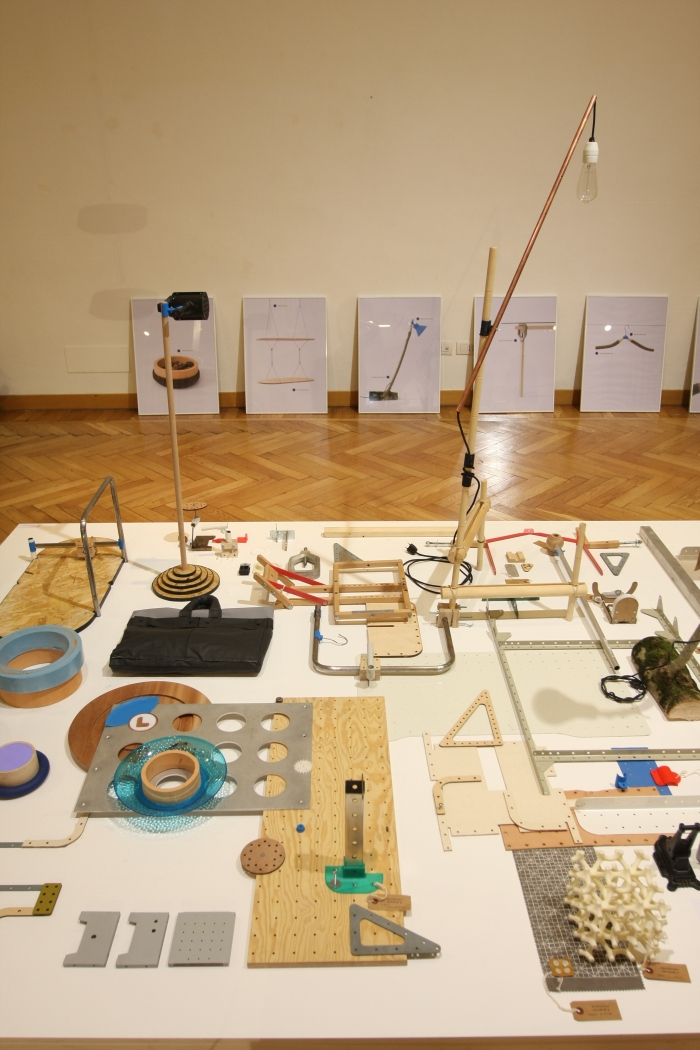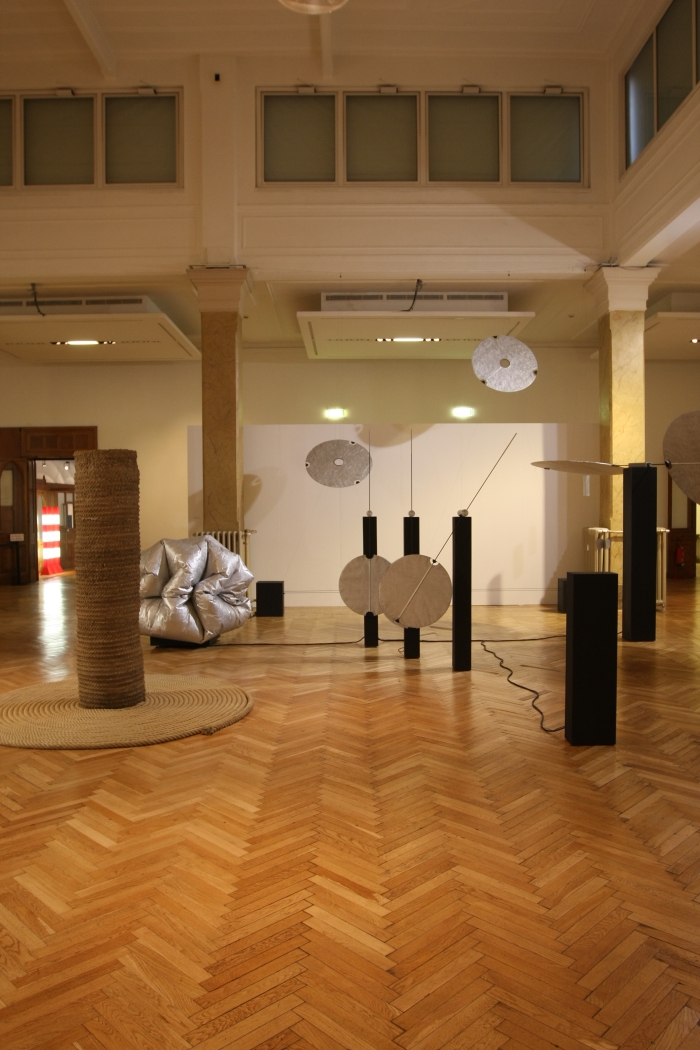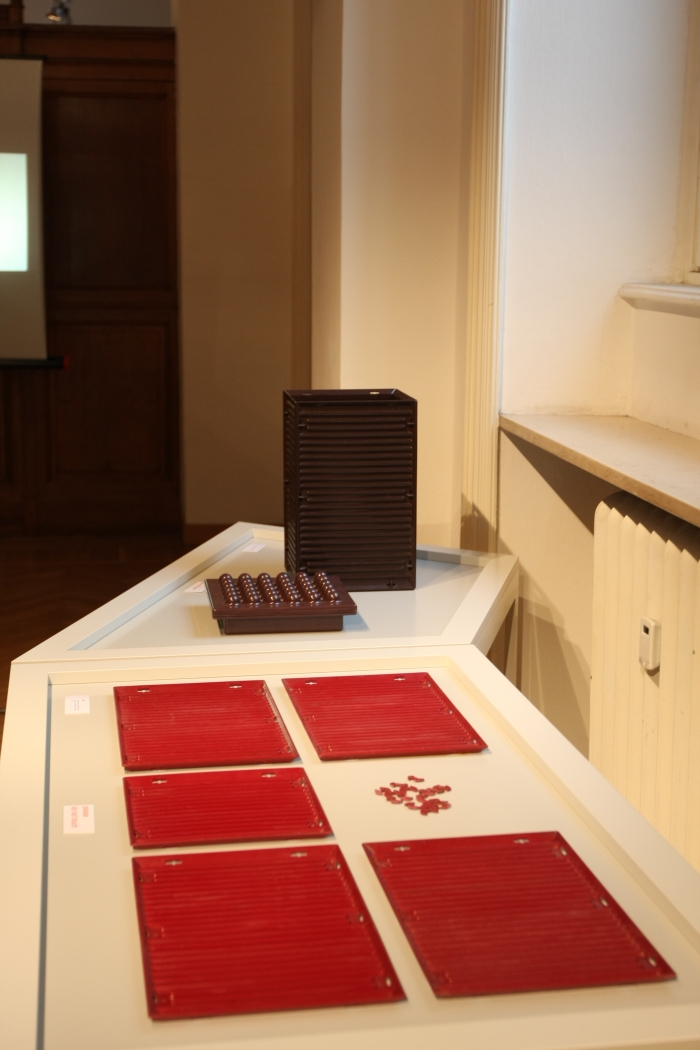Designer | Exhibitions and Shows | Fuorisalone | Fuorisalone Milan Design Week | Producer | USM Haller
To celebrate the 50th anniversary of Fritz Haller and Paul Schärer's USM Haller modular furniture system USM instigated a series of masterclasses in which students at seven international design schools were paired with a mentor and asked to "Rethink the Modular" and for all to "consider the significance of modularity in architecture and design" and so "exploit the idea of modularity for contemporary design". The results of the academic exercise were unveiled in an exhibition premièred during Milan Design Week 2015.

Divided into four sections Rethink the Modular explores modularity in terms of Rhythm, Interference, Structure and Relation; the first three of which featured, in addition to the results of the seven masterclasses, individual works by architects, artists and designers which in some form referred to the themes.
Amongst a fascinating mix of projects and approaches a particular highpoint, at least for us, was the results of the masterclass run by Brussels based designer Thomas Lommée with students from the École nationale supérieure de création industrielle (ENSCI), Paris. Focussing on the ideals of the OpenStructures project - a Belgian movement co-initiated by Thomas Lommée and which seeks to encourage systems for sharing hardware and structural components akin to the many such systems we currently have for software - the project asked the students to design an object which included at least one component from a fellow student. As a project OpenStructures (OS) Relatives not only impressed with the nice array of objects realised but much more because it freed the term "modular" from the need to be composed of repeating and/or interchangeable units. And thus not only rethought the modular but redefined it for a post industrial society.

Elsewhere we were very taken with TreeD, a very nice modular temporary internal architecture system based on natural forms developed in the masterclass run by architect Lorenzo Bini at the Politecnico di Milano; the Book/Store project developed in Allan Wexler's masterclass at Parsons The New School for Design, New York City and in which the idea of language and writing as modular systems is given a physical form, produced some nice ideas for contemporary interior design; while with their Workout Keyboard Ines Kaag and Desiree Heiss a.k.a Bless presented a series of punch bags via which one can type, each punch bag being as it is representative of a letter or action. And although we admittedly still don't really understand how it fitted in with the exhibition concept, as an installation Workout Keyboard was distractingly entertaining and possessed that captivating charm that all good showmen need to be successful.

Enjoyable, entertaining and informative as the student projects and related works unquestionably are and were, the genuine highlight of Rethink the Modular was the fourth section, Relation, which set out to place "modular" in a wider context, both culturally and socially. In addition to presenting some truly magnificent works from the likes of Volker Albus, Ettore Sottsass or Hans Hollein Relation also featured a more detailed exploration of Fritz Haller's oeuvre than you are likely to find outwith a dedicated Haller exhibition: and a showcase which delightfully elucidated how much more Fritz Haller is and was than his modular furniture system, makes as such perfectly clear what a travesty it is that he is largely only known for his modular furniture system and so by extrapolation underscores why Rethink the Modular is as much a tribute to Fritz Haller as a celebration of system USM Haller: modular is a way of thinking. Not a physical product or system. And because Fritz Haller thought modularly he could develop such an endearing, enduring and effortlessly practical modular product: or put another way System USM Haller is a physical manifestation of a theoretical deliberation of how best to organise and utilise available space in an ever changing environment, be that a city, a community or a building, and not an exercise in creating commercial office furniture.
As system USM Haller turns 50 its deeper cultural context and relevance slowly becomes better understood and supersedes the physical form. A fact from which we can all take hope: all is, not yet, lost.
The exhibition in Milan marked the start of a nine month series of global Rethink the Modular events and exhibitions in USM's network of flagship stores and at selected design festivals, and which will culminate later this year with the publication of a book documenting the projects.
Full details can be found at http://project50.usm.com











